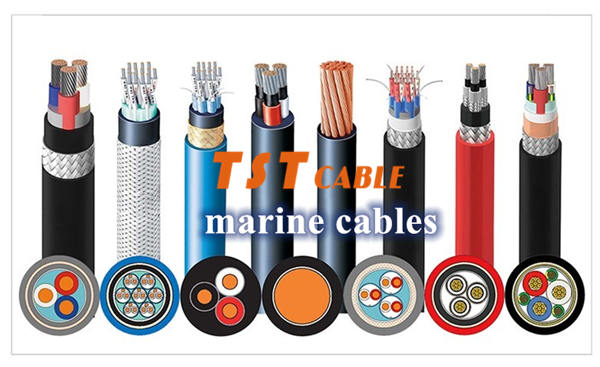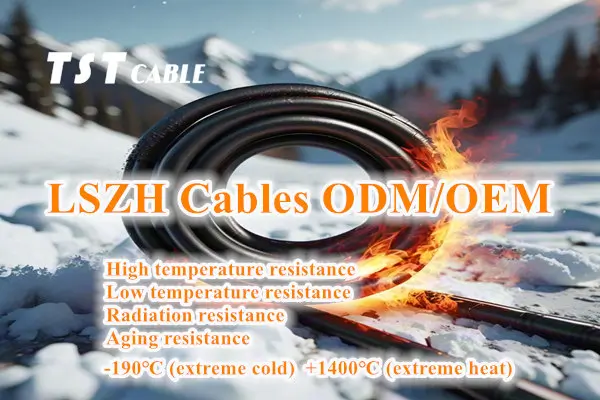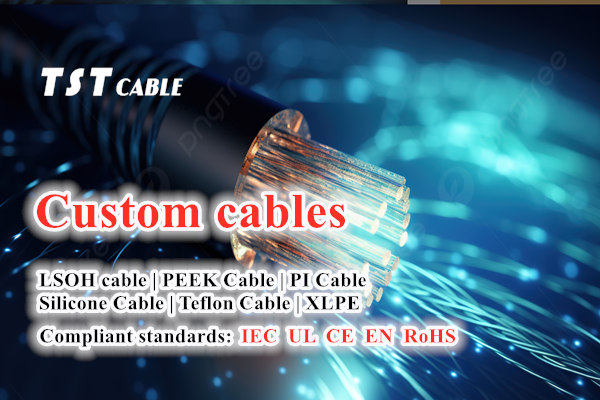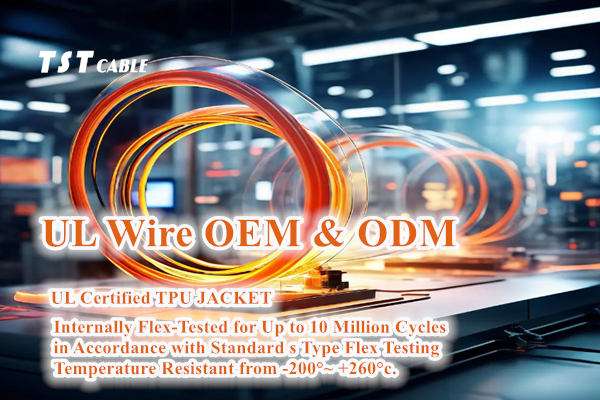Brief introduction
Marine cable is a kind of wire and cable used for power, lighting, control, communication transmission of various ships in river and sea and offshore or marine buildings, including marine power cables, marine control cables, marine communication cables and so on. Marine communication cable is a kind of marine cable used for signal transmission and control system in all kinds of ship communication, electronic computer and information processing equipment.
Usage
Marine communication cable is mainly used in all kinds of ship communication, electronic computer, information processing equipment in the signal transmission and control system use. This kind of cable is suitable for all kinds of river and sea ships, offshore oil and other water buildings on the AC rated voltage of 150V and below the signal transmission device connection line, also used in precision instrumentation or instrumentation control and signal transmission connection line, such as video connection, telephone connection and so on.

Execution standard
Marine communication cables: IEC60092-374, IEC60092-375, IEC60092-376 or GB9333-88.
IEC60092-375 : Marine communication cables and radio frequency cables: general instrumentation control communication cables;
IEC60092-374 Communication cables and radio-frequency cables for ships: non-essential communication cables;
IEC60092-373 : Communication cables and radio-frequency cables for ships: flexible coaxial cables for ships.
Main parameters
The main parameters of marine communication cables are model specifications, number of cores, combustion characteristics, rated voltage, temperature, nominal cross-sectional area and other major parameters.
Marine communication cable main performance indicators:
20 ℃ conductor DC resistance to meet the IEC60228 standard.
20 ℃ cable insulation resistance is not less than 5000MΩ-km.
Shielding performance to meet IEC60092-375 and other standards.
Halogen-free performance of the cable: halogen-free indicators to meet the requirements of IEC60754.2, the release of halogenated acid gas is not greater than 5mg/g, the specific test of its pH value is not less than 4.3, conductivity is not greater than 10μs/mm.
The capacitance of the cable meets the requirements of IEC60092-375, 374 and 373 corresponding standards.
The capacitance imbalance meets the requirements of the corresponding standards of IEC60092-375, 374 and 373.
The attenuation of the cable (due to many models, and different models and specifications of the values are different, so not listed here, but in the corresponding standards have been given) to meet the requirements of IEC60092-375 and other standards.
The impedance of the cable is also a strict implementation of the standard requirements.
Cable low-smoke performance: cable smoke density (transmittance) is not less than 60%. Meet the standard requirements of IEC61034.
Cable structure conductor is made of high quality annealed copper. The conductor structure is divided into solid conductor, stranded conductor and soft conductor. The picture on the left shows stranded conductors.
Insulation adopts extruded insulation. This extrusion method can reduce the gas between the conductor and insulation to prevent the entry of water vapor and other impurities. Insulation types are solid and foam.
The outer conductor is made of braided copper wire, whose braiding parameters are to meet the requirements of standards such as IEC60092-375.
Armor layer is generally braided type (the left picture is not armored). The type of armor flexibility is good, convenient for cable laying. Braided armor material has tinned copper wire and tinned steel wire, they have a good anti-corrosion effect. And the performance of the cable has little impact.
The outer sheath (Sheath) material is also low-smoke halogen-free material. This does not produce toxic gases when burning, and smoke production is very small. In densely populated places, the use of more.
The logo of the marine communication cable can be sprayed according to the actual need.
Marine communication cable laying
On the cable laying matters of note:
(1) need to meet the specification requirements, in the detailed design stage, the overall planning and layout, the layout of the left and right cable channel, to facilitate cable laying, dual-channel power supply equipment cable, communication and power cable laying separately.
(2)) production design stage set out to draw the cable direction, to determine the specific nodes of the cable to ensure that the cable tray and through the pieces of the laying coefficients, allowing power cables to be laid in two layers, the cable thickness of 75mm or so.
(3) PAGA system, A/B road broadcasting requirements for two-way laying, fire detection and gas detection closed-loop loop starting point separate laying, horizontal and vertical distance as far away as possible, power cables and communication cables are laid separately (spacing of 50mm), VFD frequency converter cables are individually laid with the spacing of the control and communication cables for 300mm.
(4) High-voltage cables must be walked on the cable tray, and any cables are laid separately (300mm), high-voltage cables within 20m at least one “high-voltage” “marker”, to ensure that anywhere you can see the “high-voltage” mark. markers” can be seen at any place.
(5) offshore projects for years and years to work in the vicious crack environment, temperature, corrosive gases, materials and other reasons, outdoor, mud pool fixed cable brackets and fasteners, the need for stainless steel materials, and requires the use of continuity bracket and separate grounding, watertight and fire bulkheads more MCT cable modules.
Cable models commonly used models solid polyethylene insulation low smoke halogen-free outer sheath structure of the cable model (coaxial cable, for example): CSYE95(85)-75-5, CSYE95(85)-50-7, etc..
Foam insulated low smoke and halogen free outer sheath structure of the cable model: CSYFE95(85)-75-5, CSYFE95(85)-50-7 and so on.
Marine communication cable model description
CS-indicates marine coaxial cable;
Y-polyethylene insulation;
YF-foamed polyethylene;
EW-low smoke halogen free polyolefin sheath;
95-Galvanized steel wire braided armor and low smoke halogen free outer jacket (braiding density not less than 84%);
85-tinned copper wire braided armor and low-smoke halogen-free outer sheath (braiding density of not less than 84%);
75-5 and 50-7 are impedance and specifications for coaxial cables;
This type of cable is only flame retardant not fire resistant and has a halogen content of less than 5mg/g.
TSTCables offers an extensive range of high-quality electrical wire and cable for use in marine applications. Our marine cables are designed and produced to the highest standards with ABS approvals to meet the consistency and performance that is required in marine environments.
Also available in:
English




